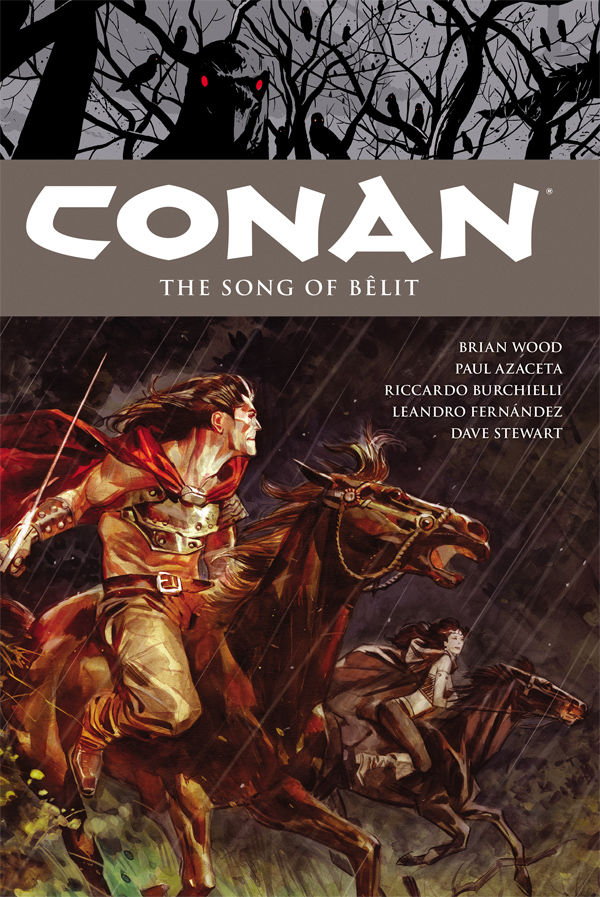Most people who picture Conan of Cimmeria picture him as a grizzled, hard-bitten slayer. The archetype (though a subject for a different article) for the barbarian warrior we know and love from countless works of fantasy over the past eight decades. The Song of Bêlit concerns itself with a younger Conan, and arguably the most important Non-Conan character in Howard’s stories, the deadly Shemite beauty Bêlit, Queen of the Black Coast.
Queen of the Black Coast was originally published in Weird Tales in 1934. In this tale, one of my personal favorites from among all of Howard’s voluminous body of work, a young Conan escaping a bit of trouble in Argos skips town aboard a ship that encounters The Tigress, Captained by Bêlit and joins her for adventures. The Song of Bêlit picks up during this time – starting with our doughty protaganists in the forest of Ghouls, trying to unload a relic of surpassing worth and mystery found aboard one of their conquests. Their quest leads them afoul of a group of cultists claiming to be blessed by the Black Stones. The story is basic but well-executed, and while Brian Wood is no Two-Gun Bob, he is more competent at writing Conan than others I’ve seen, and his Bêlit rings true enough.
The latter portion was, in my opinion the finer. The latter portion brings us Howardians to something we’re familiar with; The original Queen of the Black Coast story. If you’ve never read it I recommend it to anyone as it is now in the public domain. We rejoin our fateful lovers on board The Tigress with their relationship having been several years long at least. They find themselves at the mouth of the Zarkheba river, feared by those who sailed the black coast and the denizens of the black kingdoms. Bêlit relates to Conan an occasion where she chased a Stygian galley to the Zarkheba, and anchored at the rivers mouth to wait for her prey to return. When return it did, it was awash with blood, and the crew had been slain in detail, save one, driven mad by the events. The ship itself was full of rich treasures however; with this information Bêlit easily convinces Conan against his better judgement to sail down the river in search of a rich prize. This portion of the work closely follows the events as Howard told them, and it’s time like this where the graphic medium really shines, adding weight and impact to scenes with which i was already well-familiar.
I want to bring attention to their portrayal of Bêlit herself, I was impressed by their ability to capture the spirit of her character as Howard would have written if she’d appeared more than once. She felt like a pirate queen and I was suitably surprised by the fact that she actually was more clothed in the comic then in the original works. Bêlit is really the only woman in Howard’s works that seemed to be a true love of Conan, and affected him in a real way. I would have loved to see Howard show more of her, but as he did not we are left to the efforts of others, and I think overall they did so admirably.
I particularly liked the artwork; it had a frenetic style that I think paid suitable tribute to the “broadsword writing” of Howard’s Conan. While the the comic was quite violent, it was not gratuitously so, and was completely in keeping with the tone of The Hyborian Age. All-in-all, I would recommend “The Song of Bêlit” to any fan of the sword and sorcery genre, and those of my Howardian dog-brothers who aren’t too snobbish.





